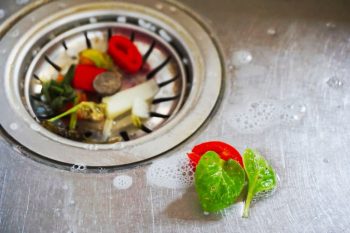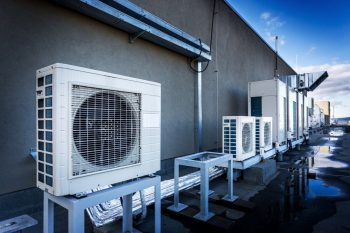
Is your washing machine starting to develop a strange, musty odor? Do you notice a buildup of grime or mold around the rubber seal or in the detergent drawer?
If so, you may be dealing with a common problem called “Scrud.”
This detergent residue, fabric softener, and dirt buildup can lead to unpleasant odors, uncleaned clothes, and even damage your machine over time.
But don’t worry; with a few simple steps and some expert advice, you can banish Scrud for good and keep your washing machine running smoothly.
Here’s a quick overview of things discussed in this article:
- Using too much detergent, leaving wet clothes in the machine, and using hard water are all common causes of Scrud buildup in your washing machine.
- Regular cleaning of your washing machine drum, rubber seal, and filters can help prevent scrud buildup and extend the life of your machine.
- Consider using a cleaning solution specifically designed for washing machines to prevent further damage.
- You can also create your own solution by mixing equal parts vinegar and baking soda.
- Vinegar and baking soda are powerful natural cleaners that can dissolve and remove buildup from the drum, hoses, and other parts of your machine.
- Don’t forget to unplug your washing machine before cleaning, and always refer to the manufacturer’s instructions for specific cleaning tips and solutions.
Overall, a well-maintained washing machine can save you money in the long run by extending its lifespan and avoiding costly repairs.
In this article, we’ll explore the various causes of scrud in detail, so you can take steps to prevent it from happening in the future.
We’ll also explain how to clean your washing machine if scrud buildup has already occurred, so you can get your machine back to running smoothly and keep your clothes looking and smelling fresh.
Common Causes of Scrud in Your Washing Machine
If you’re dealing with scrud in your washing machine, you may be wondering what’s causing it in the first place.
There are a few common culprits that can lead to the buildup of detergent residue and other grime, including:
1. Using Too Much Detergent
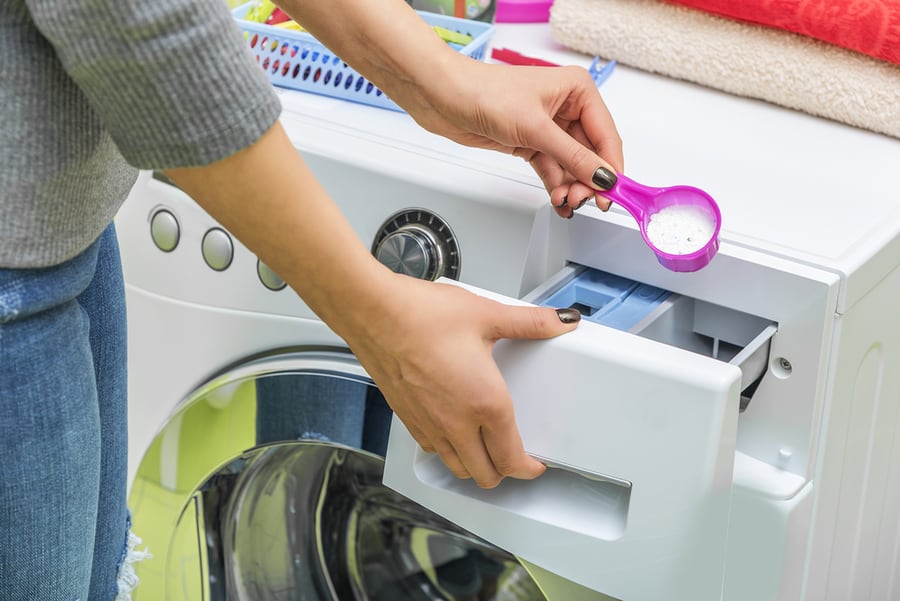
One of the most common causes of scrud is using too much detergent. While you might think that more detergent equals cleaner clothes, using too much can actually do more harm than good.
Over time, the excess detergent can build up in the machine, creating a breeding ground for bacteria and mold. This buildup can also cause your machine to work less effectively, leaving behind soap scum on your clothes.
- Follow these Instructions
To prevent this, be sure to carefully measure out the recommended amount of detergent for each load of laundry. Use a high-quality detergent that is designed for your type of washing machine, whether it’s a top-loading or front-loading machine.
If you’re dealing with particularly dirty or stained clothes, consider pre-treating them with a stain remover instead of using extra detergent.
2. Using the Wrong Type of Detergent
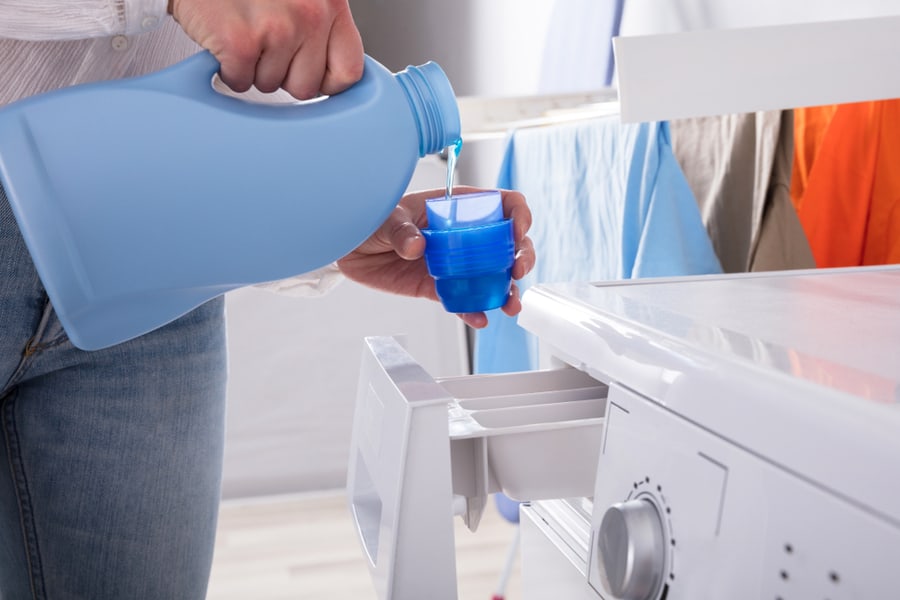
Using the wrong type of detergent for your washing machine can also contribute to the buildup of scrud. Different types of washing machines require different types of detergents and using the wrong type can lead to buildup, stains, and even damage to your machine over time.
For example, using regular laundry detergent in a high-efficiency (HE) machine can cause excess suds that are difficult to rinse away, leading to residue buildup.
- Follow these Instructions
To prevent this, make sure you use the correct type and amount of detergent for your machine. Check the machine’s manual to determine the type of detergent that is recommended for your machine.
High-efficiency machines typically require low-sudsing detergents, while regular machines can use any type of detergent.
3. Not Cleaning the Machine Regularly
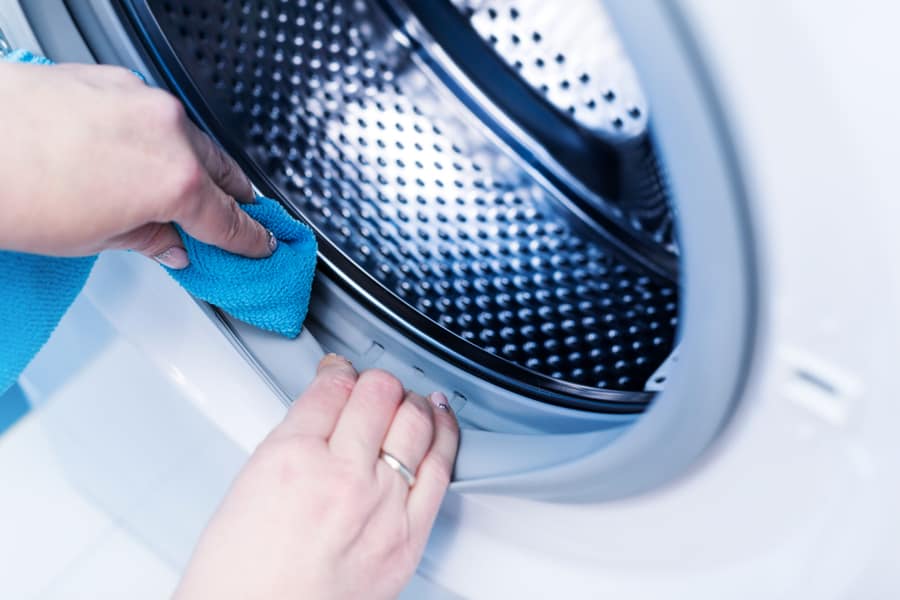
Another common cause of scud is neglecting to clean your washing machine regularly.
Even if you’re using the right type and amount of detergent and following all the best practices, your machine can still accumulate buildup from dirt, fabric softener, and other residues over time.
This buildup can cause odors, stains and even damage your machine.
- Follow these Instructions
To prevent this, be sure to clean your machine at least once a month, using a specialized washing machine cleaner or a mixture of vinegar and baking soda.
Run the machine on the hottest water setting to help dissolve any buildup and kill any bacteria or mold lurking inside.
4. Using Fabric Softener
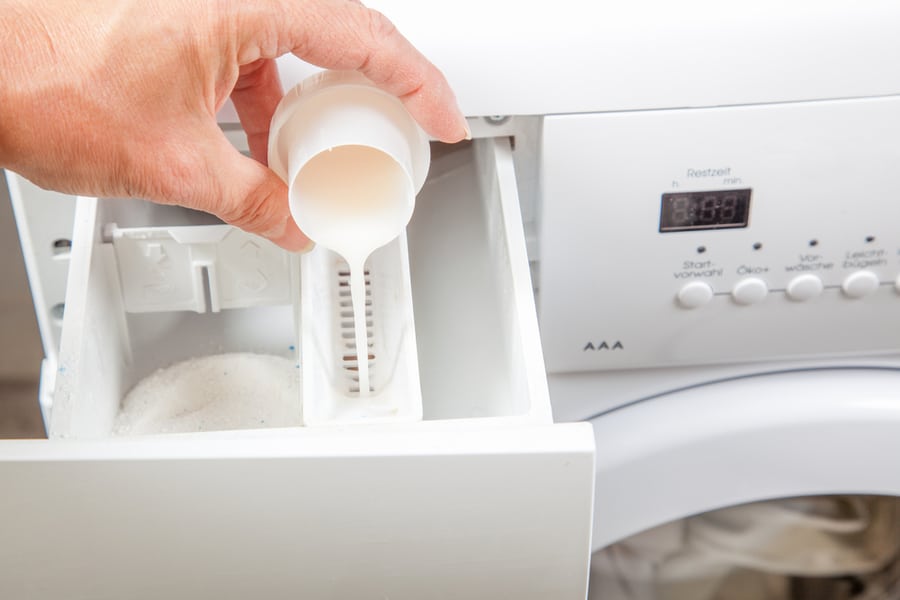
While fabric softener can help make your clothes feel softer and smell better, it can also contribute to the buildup of scrud.
This is because fabric softener is designed to coat your clothes with a thin layer of waxy residue that can accumulate in your washing machine over time.
- Follow these Instructions
To prevent this, consider using an alternative to fabric softeners, such as dryer balls. If you do use fabric softener, be sure to dilute it with water before adding it to the machine, and use it sparingly.
Wool dryer balls are a natural alternative to fabric softeners that can help soften fabrics, reduce static cling, and even help reduce drying time.
Simply toss a few wool dryer balls into the dryer with your clothes and let them work their magic.
5. Leaving Wet Clothes in the Machine
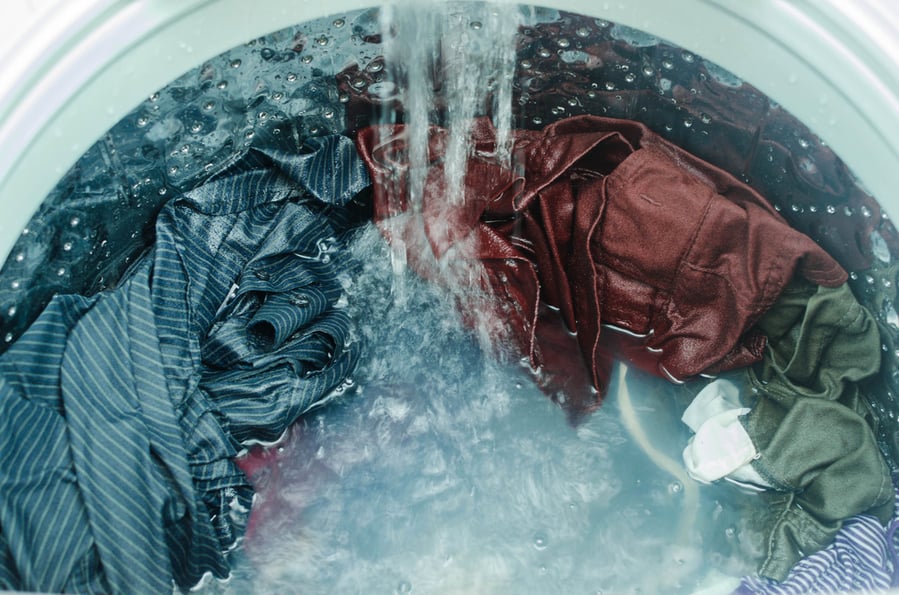
Leaving wet clothes in the washing machine is another common cause of scrub.
When wet clothes are left in the machine for an extended period of time, they can create a damp, dark environment that is perfect for bacteria and mold to grow.
This can lead to a buildup of odors and stains in your machine, as well as damage to the drum and other parts.
- Follow these Instructions
To prevent this, be sure to remove your clothes from the machine as soon as the cycle is finished. If you can’t immediately transfer them to the dryer, hang them up to air dry instead.
Additionally, consider leaving the washing machine door or lid open after each use to allow air to circulate and prevent moisture buildup.
6. Using Hard Water

Using hard water is another factor that can contribute to the buildup of scrud in your washing machine.
Hard water is water that contains high levels of minerals like calcium and magnesium, which can leave behind deposits and buildup in your machine over time.
This can cause your machine to work less effectively, leading to soap scum on your clothes and even damage to your machine over time.
- Follow these Instructions
To prevent this, consider installing a water softener in your home, which can help remove minerals from your water and reduce the risk of buildup in your machine.
You can also use specialized laundry detergents for hard water, which contain ingredients that can help soften the water and prevent buildup.
If you’re unsure if you have hard water, you can purchase a water testing kit or contact your local water authority for more information.
By taking steps to address hard water in your home, you can prevent the buildup of scrud in your washing machine and keep your clothes looking and feeling their best.
How To Clean Your Washing Machine and Eliminate Scrud Buildup
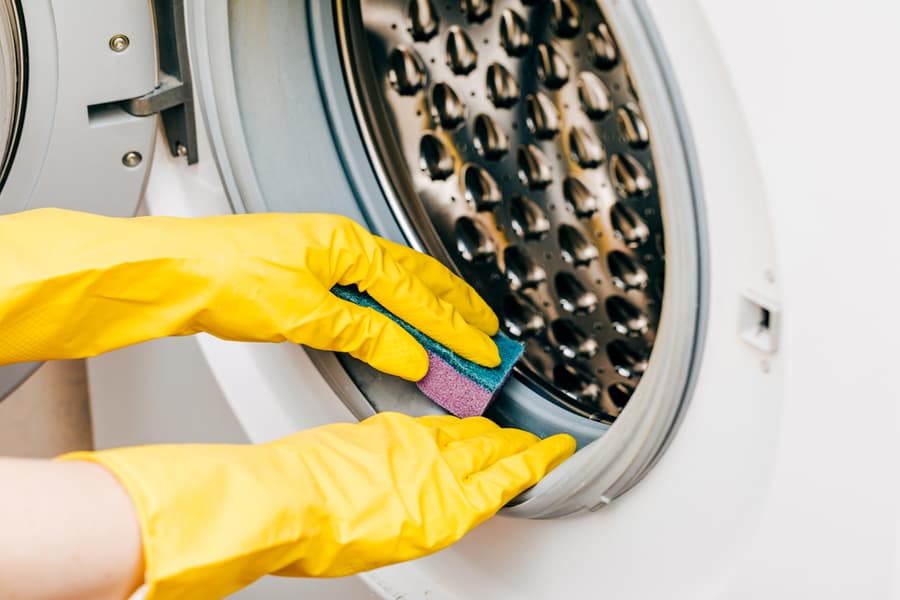
If you’ve already noticed a buildup of scrud in your washing machine, don’t worry, there are steps you can take to clean it and get it back to a sparkling clean state.
Here’s a step-by-step guide on how to clean your washing machine:
1. Unplug and Empty the Washing Machine
Before you begin the cleaning process, make sure the washing machine is unplugged and that there are no clothes or other items inside the machine.
2. Clean the Detergent Dispenser
Remove the detergent dispenser from your machine and soak it in warm, soapy water. Use a toothbrush or small cleaning brush to scrub away any buildup or residue, then rinse thoroughly.
3. Clean the Drum
Add a cup of white vinegar and baking soda or a cleaning solution specifically designed for washing machines to clean the drum. Let the solution sit for at least 15-30 minutes to dissolve any buildup or residue.
You can also use a soft-bristled brush to gently scrub away any visible buildup or stains. After the solution has enough time to work its magic, run a hot cycle to rinse away the cleaning solution and any remaining buildup.
There are many cleaning solutions available on the market that are specifically designed for washing machines, such as Affresh, Tide, and OxiClean washing machine cleaners.
These cleaners are easy to use and help eliminate odors, remove stains, and improve the overall performance of your machine.
Be sure to follow the manufacturer’s instructions carefully when using these cleaning solutions to get the best results.
4. Clean the Rubber Seal
The rubber seal around the door of your washing machine can also accumulate buildup over time. Use a cloth or sponge soaked in hot water and vinegar to wipe down the seal and remove any mold or mildew.
Be sure to dry the seal thoroughly afterward to prevent any moisture buildup.
5. Clean the Filters
Depending on the make and model of your washing machine, filters may need to be cleaned regularly. Check your machine’s manual for instructions on how to access and clean these filters.
By following these steps, you can help eliminate the buildup of scrud in your washing machine and keep it running smoothly.
Conclusion
Scrud buildup in your washing machine can be frustrating to deal with, but it’s a common issue that you can prevent with proper maintenance and cleaning.
Regular cleaning not only helps to eliminate odors and residue but also extends the life of your machine and helps it run more efficiently.
Consider your machine’s manual and use the appropriate cleaning solutions and techniques for your specific model. Taking care of your washing machine will reward you with fresh, clean clothes every time you do laundry.
Frequently Asked Questions
What Is Scrud?
Scrud is a buildup of detergent residue, fabric softener, dirt, and other grime accumulating in your washing machine’s drum, rubber seal, soap dispenser, and filters over time.
How Can I Tell My Washing Machine Has Scrud Buildup?
If you notice a musty or unpleasant odor coming from your washing machine or grayish-brown stains on your clothes after washing, your machine likely has scrud buildup.
How Often Should I Clean My Washing Machine?
It’s recommended to clean your washing machine at least once a month to prevent scrud buildup and keep your washing machine running efficiently.
Can I Use Regular Cleaning Products To Clean My Washing Machine?
It’s best to use a cleaning solution specifically designed for washing machines to ensure you’re not damaging the machine or leaving any residue behind.
However, some common household products, such as vinegar and baking soda, can also be effective for cleaning.
What Should I Do if My Machine Has a Lot of Scrud Buildup?
If your washing machine has significant scrud buildup, you may need to run multiple cleaning cycles or use a stronger cleaning solution to remove the stubborn buildup.
It’s also good to consult your machine’s manual or a professional for advice.






